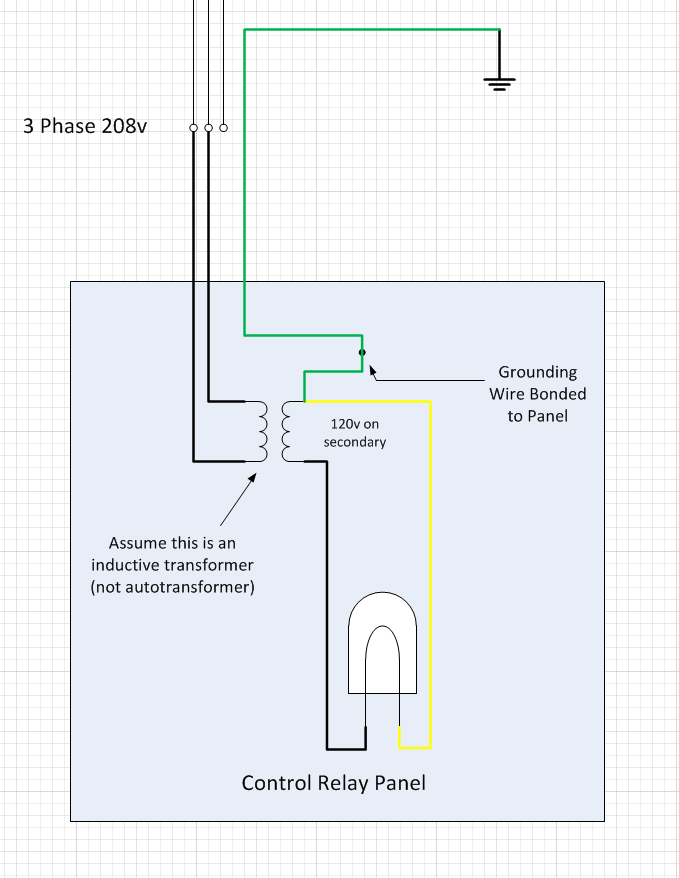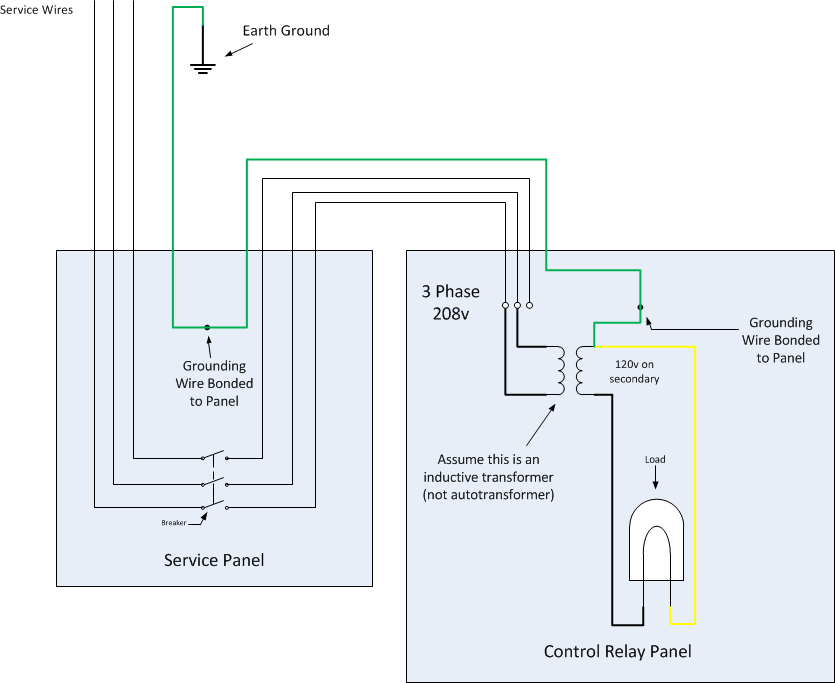theColonel1026
Member
- Location
- Omaha, Nebraska
Hi I'm an Electrical Tech student and this is my first post so if it's in the wrong place please move it.
So I want to know if this is legal per the NEC 2011. This is how my motor control instructor told us to wire control circuits. However I was talking to my Low Voltage instructor and this subject came up and he flipped his lid when I told him about it. He said not only is it against code but someone is liable to get electrocuted.
here is the diagram I whipped up in Microsoft Visio. the point of tying one side to earth ground is for ease of trouble shooting I am told. Also some electronics like it. as far as I can tell our trasnformers aren't autotranfomers since I read )v on my meter when I put one lead on earth ground when the secondary is ungrounded.

On a side note who ever wrote this I love you. I argued with my Residential instructor for an hour after class one day about this. He just couldn't get it through his head that the earth is a conductor. He just kept saying that electricity seeks ground and and then it just "dissipates".
So I want to know if this is legal per the NEC 2011. This is how my motor control instructor told us to wire control circuits. However I was talking to my Low Voltage instructor and this subject came up and he flipped his lid when I told him about it. He said not only is it against code but someone is liable to get electrocuted.
here is the diagram I whipped up in Microsoft Visio. the point of tying one side to earth ground is for ease of trouble shooting I am told. Also some electronics like it. as far as I can tell our trasnformers aren't autotranfomers since I read )v on my meter when I put one lead on earth ground when the secondary is ungrounded.

On a side note who ever wrote this I love you. I argued with my Residential instructor for an hour after class one day about this. He just couldn't get it through his head that the earth is a conductor. He just kept saying that electricity seeks ground and and then it just "dissipates".
Electricity does not seek the path of least resistance to the earth. It seeks all available paths back to it’s source, in proportion to their resistance. The reason that a person gets shocked when touching an ungrounded conductor and the earth is because the neutral of the system is repeatedly connected to earth in a grounded electrical system. The earth becomes part of a return path to the transformer – it’s part of one route back to the source; the earth is not the destination for the electricity.
Last edited by a moderator:


